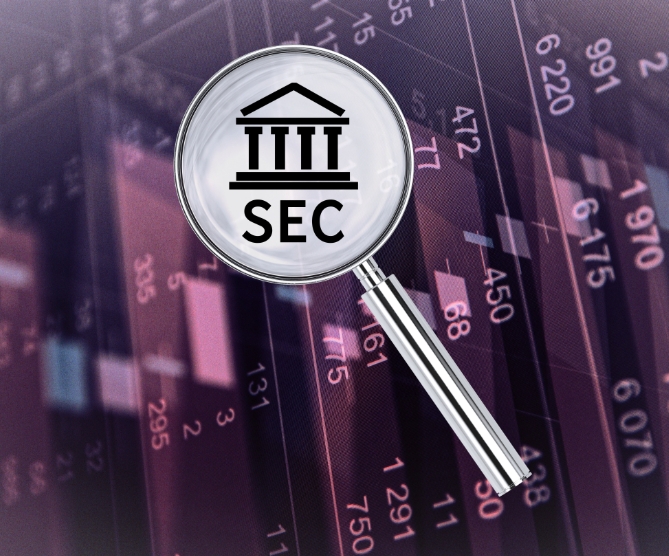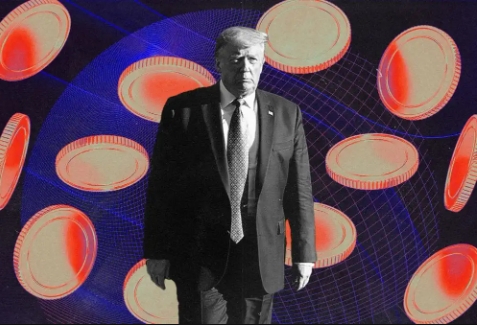By:
Matt Hougan
Chief Investment Officer
The most bullish document I’ve read on crypto wasn’t written by some yahoo on Twitter. It was written by the chairman of the SEC.
Last week, Paul Atkins, the chairman of the SEC, gave a speech to the America First Policy Institute, titled “American Leadership in the Digital Finance Revolution.”
You should go read it now.
No, seriously. Go read it. It’s a roadmap for how to invest over the next five years.
In the speech, the chairman lays out his vision for how financial markets will work in the future. Spoiler alert: It all centers around public blockchains like Ethereum. He argues that:
- All assets—stocks, bonds, dollars, etc.—will eventually move over public blockchains.
- Decentralized finance (DeFi) will play a big role in our future.
- Crypto assets and blockchains can create exciting new business models.
- The primary thing that has held us back from this “revolution” has been a hostile regulatory environment, and that has now pivoted 180 degrees.
It’s the most complete vision of how crypto can reshape financial markets that I’ve read.
I can’t imagine reading the speech and not wanting to allocate a significant portion of your capital to crypto; or, if you work in finance, a significant portion of your career. (Side note: We’re hiring at Bitwise.) It’s like the chairman of the SEC took all the best ideas crypto supporters have been promoting for the past decade and packaged them in a single speech, along with details on how the SEC can actually make them happen.
“It is a generational opportunity,” he writes.
A few years ago, I’m not sure my compliance department would have let me say that.
What This Means for Investors
There’s a lot to unpack in the speech for investors; you could build an entire venture capital firm around the chairman’s vision, creating companies to capitalize on each opportunity he lays out. But there are three immediate investing opportunities that stand out to me.
Opportunity 1: Ethereum (and Other Layer 1 Blockchains)
The first and most obvious opportunity is to invest in Ethereum and other Layer 1 blockchains that support stablecoins and tokenization.
“Today I am announcing the launch of 'Project Crypto,'" Atkins writes, “a Commission-wide initiative to modernize the securities rules and regulations to enable America’s financial markets to move on-chain.”
It doesn’t take a genius to see it: If substantially all assets are going to move onto public blockchains, you want exposure to those blockchains.
Which ones?
The best approach is likely to buy a basket of the leading assets: Ethereum, Solana, Cardano, XRP, Avalanche, Aptos, Sui, NEAR, and so on.
I know some readers will say: Ethereum is clearly the dominant chain for tokenization and stablecoins. I agree! It’s in pole position. But having watched the emergence of digital trading in the early 2000s—the last major upgrade of our financial system—I remember that the early market leaders were firms like Island ECN and Instinet.
Heard of those lately? Me neither. But Nasdaq’s stock is up 2,275% since it started trading in July 2002.¹
Instead of trying to pick and choose, an indexed approach lets you buy a basket of assets and get exposure to the top ones, whichever they turn out to be.
Opportunity 2: Coinbase, Robinhood, and Other “Super-Apps”
The most prescriptive part of the speech is a section entitled “Facilitating Super-Apps: Horizontal Integration of Product Offerings.” In it, Atkins describes a future where a single application can offer a huge array of financial services to customers.
“A broker-dealer with an alternative trading system,” says Atkins, “should be able to offer trading in non-security crypto assets alongside crypto asset securities, traditional securities, and other services, like crypto asset staking and lending, without requiring fifty-plus state licenses or multiple federal licenses.”
Reading through this section it’s hard not to think of Coinbase and Robinhood, two firms that have embraced the super-app concept, albeit from different ends of the spectrum: Coinbase started in crypto and is moving toward traditional assets, while Robinhood started in traditional assets and is moving quickly toward crypto.
I’ll go out on a limb here: One of these companies could become the largest financial services company in the world, maybe even becoming the first financial services company worth more than $1 trillion. Atkins just gave them a roadmap.
Opportunity 3: DeFi Applications
The final opportunity that jumps off the page from Atkin’s speech is decentralized finance, or DeFi.
DeFi apps have always lived in a regulatory gray zone, neither allowed nor explicitly prohibited by existing regulations. This has hamstrung their growth: DeFi apps are widely used by crypto enthusiasts but have essentially zero uptake from mainstream investors or institutions.
In a section of the speech titled “Unleashing U.S. Markets: Big Beautiful On-Chain Software Systems,” Atkins lays out why it’s been so hard for regulators to get their heads around the concept of DeFi:
“Decentralized finance software systems—like automated market makers—facilitate automated, non-intermediated financial market activity. Federal securities laws have always assumed the involvement of intermediaries that require regulation, but this does not mean that we should interpose intermediaries for the sake of forcing intermediation where the markets can function without them.”
In other words: DeFi is not just a technical revolution, but a conceptual one. And the chairman of the SEC gets it.
Despite the lack of regulatory clarity, DeFi apps have significant usage. Uniswap, the largest spot trading app, processed $88 billion in trading volume in June, its best month ever. DeFi lending protocols like Aave also hit a new high, with $56 billion in total value locked. Derivatives platforms like Hyperliquid are massive.
With greater clarity, could these numbers rise by 10x? 50x? 100x? As traditional and crypto markets merge, the opportunity is huge.
Critics note that most DeFi tokens do not have a clear economic tie to their underlying protocol. Uniswap’s UNI token, for instance, is a “governance token”—meaning holders have a say over the direction of the Uniswap protocol but don’t benefit from the trading fees that the platform collects.
I suspect this is a vestige of the hostile regulatory environment of the past. Under the new SEC vision, assets like UNI could develop more direct economic ties to their underlying protocols, unlocking huge value.
The Big Question
The most obvious question to ask about Atkins’ vision is whether it’s priced in. If the markets were already anticipating this turn from the SEC—from crypto antagonist to crypto catalyst—then it should already be factored into the price of Ethereum, Solana, Uniswap, and other assets.
Maybe.
But I’ll close with this: I was caught off guard by the speech.
I’ve studied and written about crypto nonstop for the past eight years. I’ve long been bullish about the future of crypto, and I’ve said that all assets will eventually move over blockchain-based rails. But after reading the speech, I’m realizing I have to think bigger—and move to a faster timeline.
If it wasn’t priced in for me, I’m going to guess it wasn’t priced in for others.




所有评论